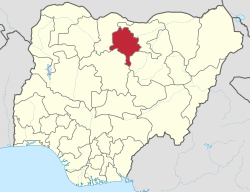INTRODUCTION
Kano is one of the seven states that make up the North-West geopolitical zone of Nigeria. It shares borders with Katsina to the Northwest, Jigawa to the Northeast, Bauchi to the Southeast, and Kaduna to the Southwest. The state capital is Kano.
LANDMASS, LOCATION AND POPULATION
Kano State lies at latitude 11° 30′ North and longitude 8° 30′ East. Its total land area is 20,131 square kilometres and has a population of 9,401,288 (2006 census) 13,076,892 (2016 forecast), making it one of the most populous states in Nigeria. The state has a population density of 467 and accounts for 6.7% of Nigeria’s population.
HISTORY AND PEOPLE
The early settlers were traditional animists whose lives centred round the shrine of sumburbura or Saarkin Aljannu/ Ubangeji. Kano State was originally part of the Northern Region in the three-region structure of 1954. In 1967, the military government of General Yakubu Gowon established Kano State as its own entity. Jigawa State was carved out of Kano State in 1991 by the military government of General Ibrahim Babangida.
The state is mostly populated by the Hausa and Fulani people. Hausa is the main language and Islam the most widely practised religion in the state.
MAIN TOWNS AND CITIES
Kano (capital), Rano, Wudil, Nasarawa, Hotoro, Dala, Danbatta, Karaye and Kabuga.
LOCAL GOVERNMENT AREAS
ADMINISTRATORS AND GOVERNORS
Audu Bako (Governor – Military): May 1967 – July 1975
Sani Bello (Governor – Military): July 1975 – September 1978
Ishaya Shekari (Governor – Military): September 1978 – Oct 1979
Abubakar Rimi (Governor – Civilian (People’s Redemption Party)): October 1979 – May 1983
Abdu Tofa (Governor – Civilian (People’s Redemption Party)): May 1983 – October 1983
Sabo Zuwo (Governor – Civilian (People’s Redemption Party)): October 1983 – December 1983
Hamza Abdullahi (Governor – Military): January 1984 – August 1985
Ahmed Daku (Governor – Military): August 1985 – December 1987
Mohammed Umaru (Governor – Military): December 1987 – July 1988
Idris Garba (Governor – Military): August 1988 – January 1992
Kabiru Gaya (Governor – Civilian (National Republican Convention)): January 1992 – November 1993
Muhammadu Wase (Administrator – Military): December 1993 – June 1996
Dominic Oneya (Administrator – Military): August 1996 – September 1998
Aminu Kontagora (Administrator – Military): September 1998 – May 1999
Rabi'u Kwankwaso (Governor – Civilian (People’s Democratic Party)): May 1999 – May 2003
Ibrahim Shekarau (Governor – Civilian (All Nigeria People’s Party)): May 2003 – May 2011
Rabi'u Kwankwaso (Governor – Civilian (People’s Democratic Party)/All Progressives Congress): May 2011 – May 2015
Abdullahi Ganduje (Governor – Civilian (All Progressives Congress): May 2015 – Present
ECONOMY AND EDUCATION
Groundnut pyramids of the 1950s
Agriculture is one of the most important pillars of the state’s economy with about 75% of the total working population engaged directly or indirectly in this activity. The principal food crops in the state are millet, cowpeas, sorghum, maize and rice (for local consumption), while groundnut and cotton are produced for export and industrial purposes.
During the colonial period and several years after Nigeria’s independence, the groundnut pyramids could be found in the state as groundnuts produced there constituted one of the country’s major revenue sources. Kano State is also a major producer of hides and skins, and leather tanning and decoration is one of its key industries. Kano has historically been an important trading centre (particularly in kola nuts, leather goods and cloth) and is the second largest industrial centre in Nigeria.
The various medium and small-scale industries in the state produce various items such as textiles, mats, cosmetics, pharmaceuticals, plastics, wire products, tiles and enamelware. The heavy industries manufacture cement, concrete blocks, bicycles, automobiles and chemicals. It is also home to a steel-rolling mill, Capital Cold Rolling Steel Mills Limited and some printing plants including Bullet Print and Muyinco Nigeria Printers, among others.
The state is one of three in Northern Nigeria that serve as dry ports and Inland Container Depots.
The tertiary institutions in the state are Bayero University, Kano; Kano State University of Science and Technology, Wudil; NorthWest University, Kano; Mohammed Abdullahi Wase Polytechnic, Kano; Kano State Polytechnic, and Audu Bako School of Agriculture, Dambatta.
FAMOUS SITES AND CULTURE
Sites
Gidan Makama Museum, Kano
The museum is housed in a 15th century historical building. It has significant collections of arts, crafts and other historical materials on Kano. The Gidan Makama Museum is a national monument.
Ancient Kano City Walls, Kano
The Ancient Kano City Walls is a UNESCO World Heritage site. Built between 1095 and 1134 to provide security for the people of Kano, it has a radius of 25 kilometres and height of 10 metres. It surrounds the old City of Kano comprising the Kurmi market, the Emir’s palace, the Great Mosque and the Gidan Makama Mosque. It is regarded as the most impressive monument in West Africa.
Kofar Mata Dye pits, Kano
Establish in 1498, the Kofar Mata Dye pits are regarded as the oldest in Africa. All the ingredients and tools used in the dyeing process are obtained locally. Textiles are dyed in aesthetically pleasing designs and colours there.
Culture
The Durbar festival dates back to the 14th century and is one of the most important festivals in Kano State. It is a royal parade of men on horses lavishly attired. It holds after the holy month of Ramadan.
NOTABLE INDIGENES
Alhaji Ado Bayero (1930-2014)
Aminu Kano (1920—1983)
DID YOU KNOW
Mallam Aminu Kano International Airport in Kano is the oldest in Nigeria. It began operations in 1936.
KANO STATE IN PICTURES

